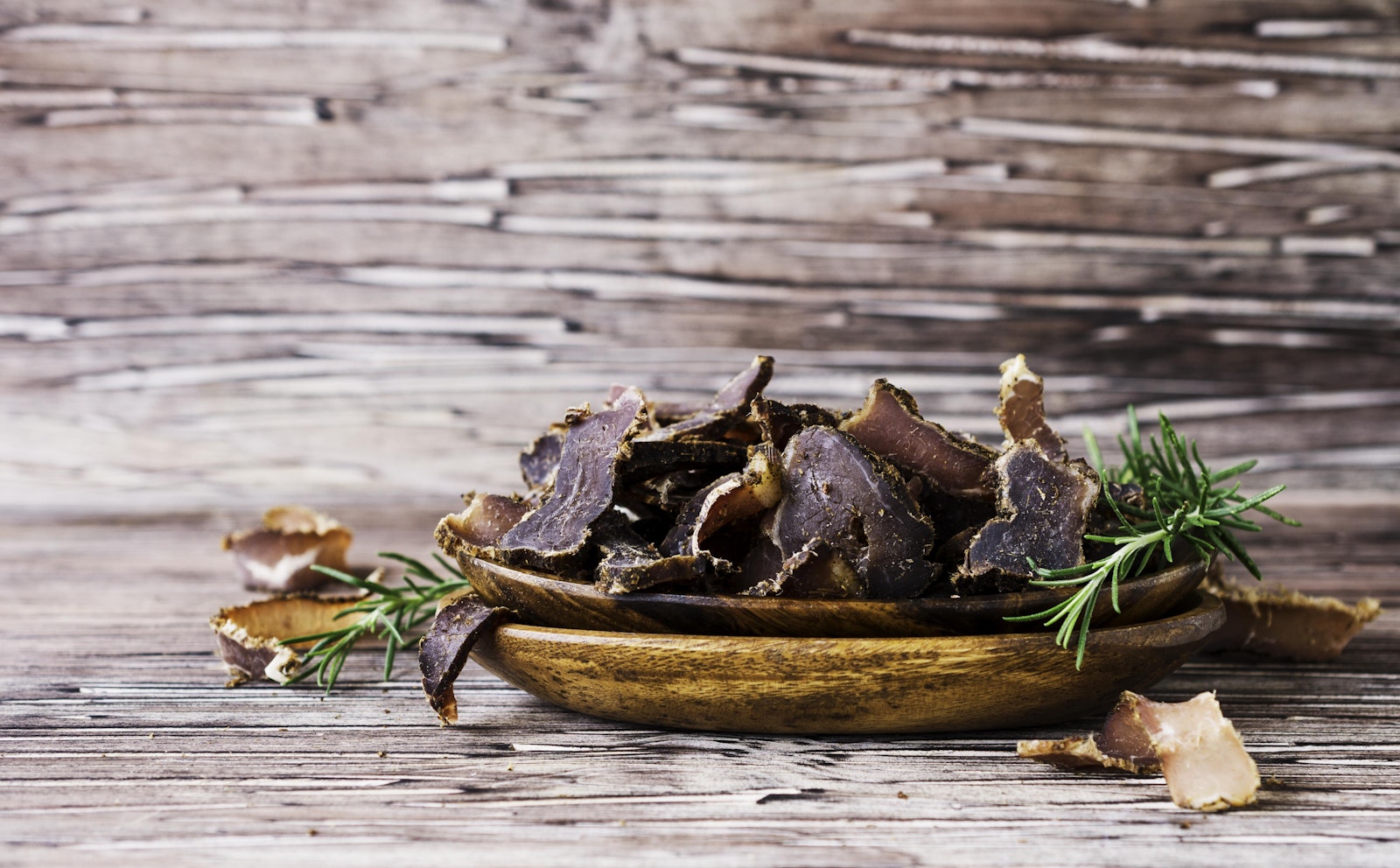Biltong, the other dried meat

Live from FEI 2018, Aaron examines the innovation behind the emerging meat brand, Kalahari Biltong.
Monday at Front End of Innovation had a bounty of stories from a diverse set of speakers. One of the more interesting pairings was AccelFoods, Jordan Gaspar, and their investment in Kalahari Biltong and Tyler Noyes as an entrepreneur.
If you’re wondering what Biltong is and why you should care, just ask yourself why beef jerky plants will never let anyone see how the jerky is processed? You’ve heard the phrase, no one should ever see how a bill becomes a law and how sausage is made. Yet we live in a world where transparency is the new black, and responsible consumers want to know what they’re consuming.
This author was introduced to Biltong as a South African snack on a trend walk in NYC at a Foresight & Trends conference last summer. Biltong’s intrigue hook was set in my cheek as I tasted this naturally easier to eat protein treat. The team of Jordan and Tyler went deep into how it is made. Using a drying and aging process vs a traditional cooking process, makes it naturally moist and devoid of sugar.
From the production, to the go-to-market strategy, and to the relationship between investors and entrepreneur; this story had numerous nuggets of innovation. The AccelFoods team saw this category starting to develop, so they went out to find the Kalahari team — and took a minority stake and an active role in the business.
The team at Kalahari has done over 1,000 product demonstrations in less than two years, which seems to be their primary go-to-market strategy. And, when you’re carving (and drying) a new category of proteins, you’ll certainly need to break the human barrier of uncertainty around new foods. Demos is the most fundamental of methods, but also highly effective if you and your team are willing to do the work.
Back to the AccelFoods team and their fund — which in itself is an innovation story. They only invest in new, disruptive food brands and the fact that 32 of 34 of their portfolio brands co-pack clarifies that point, these are inventors, brands, and entrepreneurs, not food manufacturers. This might have been a bit strange a decade ago, but now we’re seeing exit multiples up from 2.8 on average to 4.5. Those are the kind of numbers that makes investors salivate like Pavlov’s dogs.
The question I didn’t get to ask both Kalahari and AccelFoods was this, “how are the Amazon changes to Whole Foods impacting your investments and go-to-market approach?” Do you have a perspective on these changes, I’d love to hear it, because apparently it was the talk of the largest trade show in natural and organic products.
If you’re reading this and chewing on a bite of jerky from one of the old brands, you might want to give Kalahari a try. If you’re a new brand and you’re in a category you think has great potential, you might want to have a conversation with the AccelFoods team.
Thank you for the insights and innovation in both investing and food.


